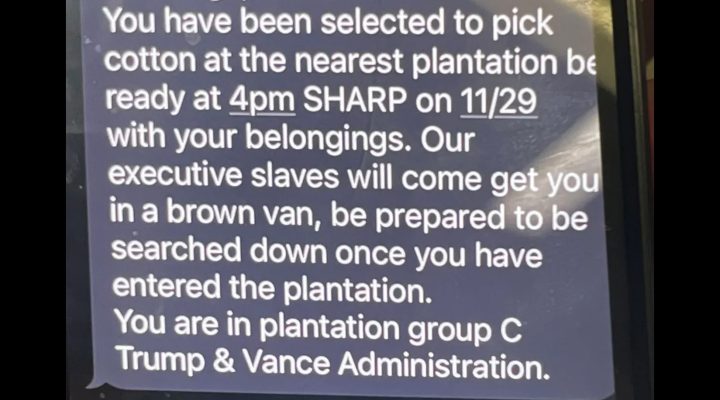United Airlines Incident Highlights Racism Against Indian American Family
Racism in the Skies: The United Airlines Incident
In a world progressively striving for inclusivity and equality, incidents of racism continue to rear their ugly heads, often in the most unexpected places. One such shocking event took place aboard a United Airlines flight, where an Indian American family faced a harsh reality that many thought belonged to the past. The situation sparked outrage and reopened the dialogue about racism in air travel, provoking discussions that extend far beyond the confines of a single airplane.
The Incident: What Happened on the Flight?
Every parent knows that traveling with kids can be a bit of a circus, right? With snacks in hand and toys flying everywhere, children can easily become the star performers. And for one Indian American family on a United Airlines flight, their performance took an unsettling turn when they encountered a fellow passenger whose prejudiced views were glaringly out of place.
As reported by NBC News, the incident began when a photographer on board made an audacious remark directed towards the Indian American family, claiming that their children were “disruptive” and should be “kept under control.” This abrupt verbal barrage was not merely an expression of annoyance; it dripped with the heavy undertones of racism. Imagine being on a plane, packed like sardines, your kids are making some noise, and instead of a fellow passenger understanding the chaos of family life, you’re hit with a slew of derogatory comments. It’s mind-boggling!
Eyewitness Accounts and Viral Videos
Though many passengers remained silent during the tirade, a few were actually brave enough to confront the photographer, challenging his racist remarks. However, the damage was done; the vibe of the cabin shifted. The whole incident escalated from a simple annoyance into a viral sensation online, thanks to one brave passenger who decided to record the exchange. When videos like this start circulating on social media, they often go viral, igniting debates and conversations.
In today’s digital age, it’s fascinating yet frightening how quickly an incident can go from a private ordeal to a public outcry. The video painting this grim picture circulated widely, leading to widespread condemnation of not only the individual’s comments but also of the airline’s response—or lack thereof.
The Aftermath: United Airlines’ Response
Let’s be real: airlines have a long history of PR crises, but how they respond can make or break their reputation. United Airlines confirmed they were investigating the incident, and a statement was released expressing regret for the situation. However, the family involved highlighted that their feelings of fear and humiliation didn’t magically dissipate with corporate platitudes. The family expressed concern that racial bias wasn’t just an isolated incident; it was indicative of deeper systemic issues.
In a statement, the family emphasized their desire for a more comprehensive examination of racism in travel, making it clear that one offensive encounter was just the tip of the iceberg. It’s not just about one man’s hateful comments; it’s about a larger cultural problem.
Societal Reflections: Why This Matters
So why does this incident deserve not just a passing glance but deeper reflection? Because it easily transcends the confines of a single airplane cabin, illustrating how deeply ingrained racial biases can manifest in mundane settings.
The Larger Narrative of Racism and Travel
Travel should be a joyous experience filled with exploration, adventure, and discovery. Instead, many people—especially from marginalized communities—often walk into their journeys with trepidation, worrying about how they might be treated.
- Statistically Speaking: A study published by the Pew Research Center shows that 58% of Black Americans and 51% of Hispanic Americans have experienced discrimination when traveling—whether on public transport or in hotels.
- Emotional Impact: The psychological toll racism takes on victims is immense. Imagine boarding an aircraft, excited for a vacation, only to be reminded of your identity in a negative light. This isn’t merely an inconvenience; it can lead to long-lasting trauma.
Confronting Our Collective Implicit Bias
This incident also invites us to confront our own biases, whether they are conscious or subconscious. Have you ever glanced at someone and quickly made a judgment? We all have, often without realizing it. Implicit biases seep into our daily lives, influencing behaviors and perceptions.
-
It Starts with Awareness: Acknowledging that we might harbor biases is the first step toward change. It’s essential to educate ourselves about different cultures and experiences. We should strive to engage in conversations that promote understanding, rather than fear.
-
Building Empathy: Try putting yourself in someone else’s shoes for a moment. What if that family on the plane had been yours? Or what if you were the one facing racially charged comments? Real talk—how would that make you feel? We need to encourage empathy, especially in public spaces like airplanes where everyone shares a common goal of reaching their destination safely and comfortably.
Solutions and Moving Forward
Navigating the complexities of systemic racism is no small feat, but it’s imperative that we push for change, especially in environments where people can’t simply walk away.
What Can Airlines Do?
-
Training and Awareness: Airlines must invest in diversity training for their employees. Including modules that focus on sensitivity and implicit bias could educate staff about how to recognize and respond to discriminatory behavior. Imagine a scenario where flight attendants are not just servers but also peacemakers who can handle such incidents gracefully.
-
Clear Policies: Establishing clear guidelines on how to address racism on flights is essential. If an incident occurs, there should be transparent protocols for handling situations and supporting victims. This could involve immediate communication with airline officials and ensuring follow-up support for affected individuals.
The Role of Passengers
-
Speak Up: If you witness harassment or discrimination on a flight, don’t be a silent observer. It can be daunting, but raising your voice makes a difference. Imagine the ripple effect: your bravery could empower others to stand up against discrimination too.
-
Report Incidents: Always report troubling encounters to airline representatives. Documentation can prompt necessary action.
Conclusion
The United Airlines incident serves as a wake-up call, a reminder that we still have much work to do to combat racism in everyday life, including during our travels. By speaking out, educating ourselves, and creating a culture of inclusivity, we can foster a better environment—both in the skies and on the ground.
Taking a stand against racism is not just an act of kindness; it’s a responsibility we share as members of a global community. So, the next time you step aboard an airplane, remember the power of your voice and your ability to make a difference.
FAQs
-
What happened in the United Airlines incident involving the Indian American family?
The Indian American family faced racist comments from a fellow passenger about their children’s behavior during a flight, which led to significant public backlash and discussions on racism in travel. -
How should airlines handle incidents of racism on flights?
Airlines must have clear policies for addressing such behavior, including diversity training for staff and protocols for intervening when incidents occur. -
What steps can passengers take if they witness racism on an airplane?
Passengers should speak up against the behavior, support affected individuals, and report incidents to airline staff.
-
Why is it essential to discuss racism in travel?
Because it highlights systemic issues and raises awareness about the discrimination that travelers from marginalized communities often face. -
How can we confront our own biases as travelers?
By educating ourselves about different cultures, engaging in meaningful conversations, and practicing empathy in our interactions.







